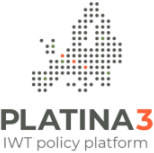Policy measures for green IWT
Executive summary This report presents the results of the research conducted for Task 1.5 of PLATINA3, focusing on the existing regulatory framework, policy measures, strategies and various initiatives at EU level that support inland waterway transport (IWT) development and modal shift from road to inland waterways. Specific attention is given to measures targeting decarbonization of[…]

